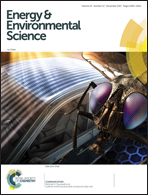Cigarette butt-derived carbons have ultra-high surface area and unprecedented hydrogen storage capacity†
Abstract
Discarded cigarette filters, in the form of cigarette butts, are a major waste disposal and environmental pollution hazard due to mainly containing cellulose acetate which is non-biodegradable; 5.8 trillion cigarettes are smoked worldwide per annum generating >800 000 metric tons of cigarette butts. Apart from causing litter, cigarette butts contain contaminants such as toxic heavy metals, which can leach into waterways, potentially causing harm to both humans and wildlife. In an effort to turn dangerous waste into high value products, this study explores the valorisation of discarded smoked cigarette filters/butts. We show that porous carbons derived from cigarette butts, via sequential benign hydrothermal carbonisation and activation, are super porous and have ultra-high surface area (4300 m2 g−1) and pore volume (2.09 cm3 g−1) arising almost entirely (>90%) from micropores. The carbons also have uncharacteristically high oxygen content associated with O-containing functional groups (COOH, C–OH and C![[double bond, length as m-dash]](https://www.rsc.org/images/entities/char_e001.gif) O), and show anomalous behaviour with respect to the effect of activation temperature on porosity, the latter being ascribable to the chemical mix present in cigarette butts and their hydrochar products. Due to the combined effects of high surface area, high microporosity and an oxygen-rich nature, the carbons exhibit unprecedentedly high hydrogen storage capacity of 8.1 wt% excess uptake, and 9.4 wt% total uptake at −196 °C and 20 bar, rising to total uptake of 10.4 wt% and 11.2 wt% at 30 and 40 bar, respectively. The hydrogen storage capacity is the highest reported to date for any porous carbons and attains new levels for porous materials in general. This work also raises the question on whether valorisation can solve the intractable cigarette butt problem.
O), and show anomalous behaviour with respect to the effect of activation temperature on porosity, the latter being ascribable to the chemical mix present in cigarette butts and their hydrochar products. Due to the combined effects of high surface area, high microporosity and an oxygen-rich nature, the carbons exhibit unprecedentedly high hydrogen storage capacity of 8.1 wt% excess uptake, and 9.4 wt% total uptake at −196 °C and 20 bar, rising to total uptake of 10.4 wt% and 11.2 wt% at 30 and 40 bar, respectively. The hydrogen storage capacity is the highest reported to date for any porous carbons and attains new levels for porous materials in general. This work also raises the question on whether valorisation can solve the intractable cigarette butt problem.



 Please wait while we load your content...
Please wait while we load your content...